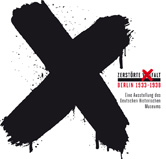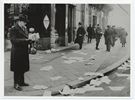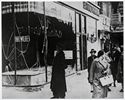
Diversity Destroyed. Berlin 1933 – 1938
An exhibition of the German Historical Museum on the Berlin Theme Year
“Diversity Destroyed. Berlin 1933 – 1938 – 1945”
31 January – 10 November 2013
Curator: Dr. Simone Erpel
During the time of the Weimar Republic Berlin was the political nerve centre and a pulsating metropolis with more than four million inhabitants. The appointment of Adolf Hitler as Chancellor of the Reich on 30 January 1933 marked the beginning of the ultimate destruction of the democracy. Essential basic rights and the legal order were invalidated, trade unions disbanded, political parties and social organisations banned or forced to shut down. The “seizure of power” by the National Socialists was accomplished with unparalleled swiftness and was marked by a wave of terror against political opponents, the Jewish population and other groups in German society.
The exhibition “Diversity Destroyed. Berlin 1933 – 1938” is the contribution of the German Historical Museum to the eponymous Theme Year of the city of Berlin. It recalls in particular the takeover of power in 1933 and the November pogrom in 1938. The exhibition brings together more than forty projects of museums and memorials, private associations and initiatives that deal with the history of Berlin under National Socialism in exhibitions, temporary art projects, theatre performances, readings, film projects or audio guides. Together they document the disastrous consequences of the Nazi dictatorship for life in the capital city.





